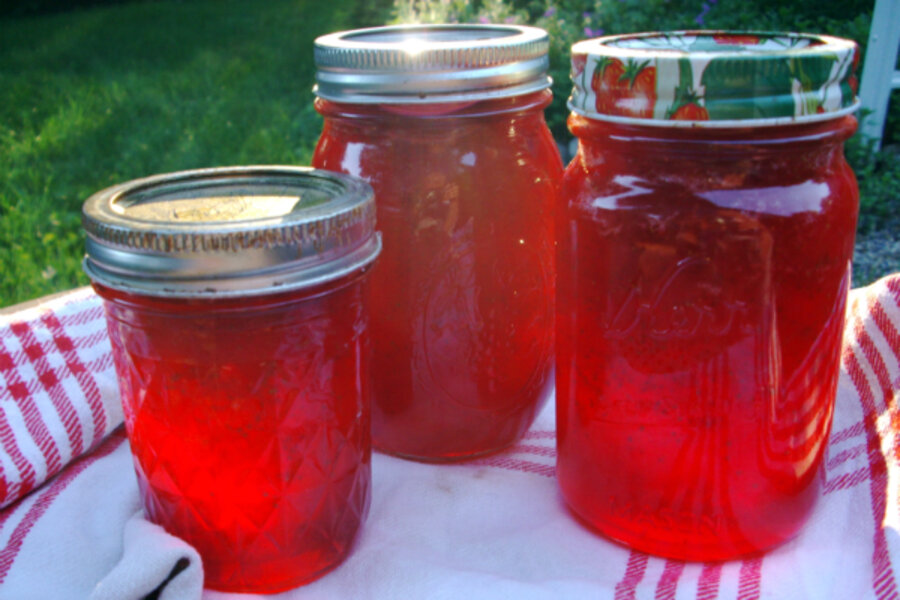By Owen Thomas, Staff writer
From Sure-Jell, makes 1 batch, fills eight 4-ounce jars.
2 quarts of strawberries
7 cups of white granulated sugar, which is most of a 5-lb. bag. (Astonishing. But delicious.)
1/2 teaspoon butter or margarine
1 box of Sure-Jell pectin
1. Bring boiling-water canner, half-full with water, to simmer. Wash jars and screw bands in hot, soapy water; rinse with warm water. Pour boiling water over flat lids in saucepan off the heat. Let stand in hot water until ready to use. Drain well before filling.
2. Stem and crush strawberries thoroughly, one layer at a time. Measure exactly 4 cups crushed strawberries into 6- or 8-quart saucepot.
3. Add sugar; stir. Add butter to reduce foaming. Bring to full rolling boil (a boil that doesn't stop bubbling when stirred) on high heat, stirring constantly. Stir in pectin. Return to full rolling boil and boil exactly 1 minute, stirring constantly. Remove from heat. Skim off any foam with metal spoon.
4. Ladle immediately into prepared jars, filling to within 1/8 inch of tops. Wipe jar rims and threads. Cover with 2-piece lids. Screw bands tightly. Place jars on elevated rack in canner. Lower rack into canner. (Water must cover jars by 1 to 2 inches. Add boiling water, if necessary.) Cover; bring water to gentle boil. Process 10 minutes. Remove jars and place upright on towel to cool completely. After jars cool, check seals by pressing middle of lid with finger. (If lid springs back, lid is not sealed and refrigeration is necessary.)







